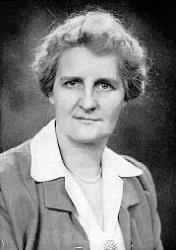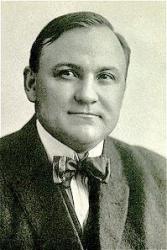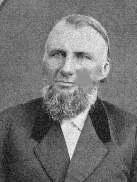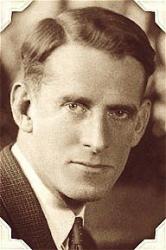Planning worship?
Check out our sister site, ZeteoSearch.org,
for 20+ additional resources related to your search.
- |
User Links
Person Results
‹ Return to hymnal







Export as CSV
H. W. Baker

1821 - 1877 Person Name: Henry Williams Baker Hymnal Number: d28 Author of "O perfect life of love, All, all is finished now" in Gospel Songs of the Air Baker, Sir Henry Williams, Bart., eldest son of Admiral Sir Henry Loraine Baker, born in London, May 27, 1821, and educated at Trinity College, Cambridge, where he graduated, B.A. 1844, M.A. 1847. Taking Holy Orders in 1844, he became, in 1851, Vicar of Monkland, Herefordshire. This benefice he held to his death, on Monday, Feb. 12, 1877. He succeeded to the Baronetcy in 1851. Sir Henry's name is intimately associated with hymnody. One of his earliest compositions was the very beautiful hymn, "Oh! what if we are Christ's," which he contributed to Murray's Hymnal for the Use of the English Church, 1852. His hymns, including metrical litanies and translations, number in the revised edition of Hymns Ancient & Modern, 33 in all. These were contributed at various times to Murray's Hymnal, Hymns Ancient & Modern and the London Mission Hymn Book, 1876-7. The last contains his three latest hymns. These are not included in Hymns Ancient & Modern. Of his hymns four only are in the highest strains of jubilation, another four are bright and cheerful, and the remainder are very tender, but exceedingly plaintive, sometimes even to sadness. Even those which at first seem bright and cheerful have an undertone of plaintiveness, and leave a dreamy sadness upon the spirit of the singer. Poetical figures, far-fetched illustrations, and difficult compound words, he entirely eschewed. In his simplicity of language, smoothness of rhythm, and earnestness of utterance, he reminds one forcibly of the saintly Lyte. In common with Lyte also, if a subject presented itself to his mind with striking contrasts of lights and shadows, he almost invariably sought shelter in the shadows. The last audible words which lingered on his dying lips were the third stanza of his exquisite rendering of the 23rd Psalm, "The King of Love, my Shepherd is:"—
Perverse and foolish, oft I strayed,
But yet in love He sought me,
And on His Shoulder gently laid,
And home, rejoicing, brought me."
This tender sadness, brightened by a soft calm peace, was an epitome of his poetical life.
Sir Henry's labours as the Editor of Hymns Ancient & Modern were very arduous. The trial copy was distributed amongst a few friends in 1859; first ed. published 1861, and the Appendix, in 1868; the trial copy of the revised ed. was issued in 1874, and the publication followed in 1875. In addition he edited Hymns for the London Mission, 1874, and Hymns for Mission Services, n.d., c. 1876-7. He also published Daily Prayers for those who work hard; a Daily Text Book, &c. In Hymns Ancient & Modern there are also four tunes (33, 211, 254, 472) the melodies of which are by Sir Henry, and the harmonies by Dr. Monk. He died Feb. 12, 1877.
--John Julian, Dictionary of Hymnology (1907)
H. W. Baker
Merrill Dunlop

1905 - 2002 Hymnal Number: d37 Author of "A song of joy" in Gospel Songs of the Air Merrill Everett Dunlop
Born: May 9, 1905, Chicago, Illinois.
Died: June 15, 2002.
Dunlop was educated at Central YMCA College, Chicago (BA) and the Moody Bible Institute (graduated 1926). He played the piano and organ at Moody Church (1921-24), and served as director of music at the Chicago Gospel Tabernacle (1926-53). Burton Bosworth was his father-in-law.
Dunlop wrote over 700 hymns and Gospel songs, and works including:
Songs of a Christian, 1937
New Songs of a Christian, 1941
© The Cyber Hymnal™ (www.hymntime.net/tch)
Merrill Dunlop
Avis B. Christiansen

1895 - 1985 Person Name: Christian B. Anson Hymnal Number: d11 Author of "Blessed Calvary" in Gospel Songs of the Air Avis Marguerite Burgeson was born in 1895 and lived in Chicago all her life. She attended the Moody Church, pastored for many years by Dr. Harry Ironside. In 1917, Avis Burgeson married Ernest Christiansen who later became a vice president of Moody Bible Institute. She was a modest and retiring woman, and sometimes used pen names: Avis Burgesson, Christian B. Anson and Constance B. Reid. She began writing poems in childhood, and before her death in 1985 had written thousands of them. She died in 1985.
NN, Hymnary
Avis B. Christiansen
Charles Wesley

1707 - 1788 Person Name: Charles Wesley, 1707-1788 Hymnal Number: d17 Author of "I love my Savior dear" in Gospel Songs of the Air Charles Wesley, M.A. was the great hymn-writer of the Wesley family, perhaps, taking quantity and quality into consideration, the great hymn-writer of all ages. Charles Wesley was the youngest son and 18th child of Samuel and Susanna Wesley, and was born at Epworth Rectory, Dec. 18, 1707. In 1716 he went to Westminster School, being provided with a home and board by his elder brother Samuel, then usher at the school, until 1721, when he was elected King's Scholar, and as such received his board and education free. In 1726 Charles Wesley was elected to a Westminster studentship at Christ Church, Oxford, where he took his degree in 1729, and became a college tutor. In the early part of the same year his religious impressions were much deepened, and he became one of the first band of "Oxford Methodists."
In 1735 he went with his brother John to Georgia, as secretary to General Oglethorpe, having before he set out received Deacon's and Priest's Orders on two successive Sundays. His stay in Georgia was very short; he returned to England in 1736, and in 1737 came under the influence of Count Zinzendorf and the Moravians, especially of that remarkable man who had so large a share in moulding John Wesley's career, Peter Bonier, and also of a Mr. Bray, a brazier in Little Britain. On Whitsunday, 1737, [sic. 1738] he "found rest to his soul," and in 1738 he became curate to his friend, Mr. Stonehouse, Vicar of Islington, but the opposition of the churchwardens was so great that the Vicar consented that he "should preach in his church no more." Henceforth his work was identified with that of his brother John, and he became an indefatigable itinerant and field preacher. On April 8, 1749, he married Miss Sarah Gwynne. His marriage, unlike that of his brother John, was a most happy one; his wife was accustomed to accompany him on his evangelistic journeys, which were as frequent as ever until the year 1756," when he ceased to itinerate, and mainly devoted himself to the care of the Societies in London and Bristol. Bristol was his headquarters until 1771, when he removed with his family to London, and, besides attending to the Societies, devoted himself much, as he had done in his youth, to the spiritual care of prisoners in Newgate. He had long been troubled about the relations of Methodism to the Church of England, and strongly disapproved of his brother John's "ordinations." Wesley-like, he expressed his disapproval in the most outspoken fashion, but, as in the case of Samuel at an earlier period, the differences between the brothers never led to a breach of friendship. He died in London, March 29, 1788, and was buried in Marylebone churchyard. His brother John was deeply grieved because he would not consent to be interred in the burial-ground of the City Road Chapel, where he had prepared a grave for himself, but Charles said, "I have lived, and I die, in the Communion of the Church of England, and I will be buried in the yard of my parish church." Eight clergymen of the Church of England bore his pall. He had a large family, four of whom survived him; three sons, who all became distinguished in the musical world, and one daughter, who inherited some of her father's poetical genius. The widow and orphans were treated with the greatest kindness and generosity by John Wesley.
As a hymn-writer Charles Wesley was unique. He is said to have written no less than 6500 hymns, and though, of course, in so vast a number some are of unequal merit, it is perfectly marvellous how many there are which rise to the highest degree of excellence. His feelings on every occasion of importance, whether private or public, found their best expression in a hymn. His own conversion, his own marriage, the earthquake panic, the rumours of an invasion from France, the defeat of Prince Charles Edward at Culloden, the Gordon riots, every Festival of the Christian Church, every doctrine of the Christian Faith, striking scenes in Scripture history, striking scenes which came within his own view, the deaths of friends as they passed away, one by one, before him, all furnished occasions for the exercise of his divine gift. Nor must we forget his hymns for little children, a branch of sacred poetry in which the mantle of Dr. Watts seems to have fallen upon him. It would be simply impossible within our space to enumerate even those of the hymns which have become really classical. The saying that a really good hymn is as rare an appearance as that of a comet is falsified by the work of Charles Wesley; for hymns, which are really good in every respect, flowed from his pen in quick succession, and death alone stopped the course of the perennial stream.
It has been the common practice, however for a hundred years or more to ascribe all translations from the German to John Wesley, as he only of the two brothers knew that language; and to assign to Charles Wesley all the original hymns except such as are traceable to John Wesley through his Journals and other works.
The list of 482 original hymns by John and Charles Wesley listed in this Dictionary of Hymnology have formed an important part of Methodist hymnody and show the enormous influence of the Wesleys on the English hymnody of the nineteenth century.
-- Excerpts from John Julian, Dictionary of Hymnology (1907)
==================
Charles Wesley, the son of Samuel Wesley, was born at Epworth, Dec. 18, 1707. He was educated at Westminster School and afterwards at Christ Church, Oxford, where he graduated M.A. In 1735, he took Orders and immediately proceeded with his brother John to Georgia, both being employed as missionaries of the S.P.G. He returned to England in 1736. For many years he engaged with his brother in preaching the Gospel. He died March 29, 1788. To Charles Wesley has been justly assigned the appellation of the "Bard of Methodism." His prominence in hymn writing may be judged from the fact that in the "Wesleyan Hymn Book," 623 of the 770 hymns were written by him; and he published more than thirty poetical works, written either by himself alone, or in conjunction with his brother. The number of his separate hymns is at least five thousand.
--Annotations of the Hymnal, Charles Hutchins, M.A., 1872.
Charles Wesley
Paul Rader

1879 - 1938 Hymnal Number: d1 Author of "Tell the story" in Gospel Songs of the Air Rader was one of the most powerful evangelistic preachers of the early 20th Century. He described himself as an ex-bellboy, ex-cowboy, ex-prospector, ex-football player, and ex-pugilist.
He was pastor of Moody Church in Chicago, Illinois (1915–21), and followed founder Albert Simpson as president of the Christian and Missionary Alliance (1920–23). He also founded the Chicago Gospel Tabernacle in 1922 and pastored it for 11 years.
Rader wrote many Gospel song lyrics and a few tunes, and was instrumental in founding of the Tabernacle Publishing Company.
Rader was a pioneer of Christian broadcasting, as well: In the early 1920’s, the beginning days of radio, station WBBM in Chicago, Illinois, closed every Sunday. Rader received permission to use the studios, and for several years ran a 14-hour Christian program every Sunday. Rader called his station within a station WJBT (Where Jesus Blesses Thousands).
--© Cyber Hymnal™ (www.hymntime.com/tch)
Paul Rader
J. K. Alwood

1828 - 1909 Person Name: Josiah K. Alwood Hymnal Number: d29 Author of "The unclouded day" in Gospel Songs of the Air Alwood, Josiah Kelley. (Harrison County, Ohio, July 15, 1828--January 13, 1909, Morenci, Michigan). Ordained by the United Brethren in Christ, he spent many years as a circuit rider, traveling on horseback to his many appointments. He would be gone from his family for weeks at a time while he held revival meetings and lectured on Christian doctrine. Later, he became a presiding elder in the North Ohio Conference and was a delegate to several general conferences of his church. Always a staunch supporter of the original constitution of his denomination, he was a delegate to the general conference at the time of the separation of the church into two groups at York, Pennsylvania, in 1889.
--William J. Reynolds, DNAH Archives
J. K. Alwood
Eliza H. Hamilton
Hymnal Number: d25 Author of "Resting, I am resting" in Gospel Songs of the Air
Eliza H. Hamilton
Lance B. Latham

1894 - 1985 Hymnal Number: d34 Author of "Praise to the living God who gave us" in Gospel Songs of the Air Lance Brenton Latham, 1894-1985
Born: March 21, 1894, Dentonville, Pennsylvania.
Died: January 15, 1985, Rolling Meadows, Illinois.
Buried: Ridgewood Cemetery, Glenview, Illinois.
Latham is best known as the co-founder of Awana® Clubs International. But in Christian music circles, "Doc" was renowned for his music ministry. He displayed a propensity for music at an early age, starting lessons at age three. He was soon playing songs by heart, as his mother called out page numbers from a hymn book. After he graduated from college at age 17, music took center stage in his life. He received piano training from Mauritz Leefson, director of the Philadelphia Conservatory of Music, and earned critical and popular praise performing throughout the Philadelphia area. His rising musical career played a part in his salvation decision. At age 21, he was invited to play for William Nicholson’s evangelistic crusade in Chester, Pennsylvania. On Sept. 18, 1915, after hearing one of Nicholson’s Gospel presentations, the young prodigy received Christ as his Savior.
Following conversion, Latham began putting his musical gifts to use composing hymns. He soon was "discovered" by Paul Rader, America’s first nationwide radio preacher. Rader hired Latham to join the musical staff at Moody Tabernacle and to travel with him on evangelistic crusades. When Rader became pastor at the Chicago Gospel Tabernacle in 1922, he invited Latham to serve as an associate. Latham later organized a musical group called the White Shirt Brigade. This all boy choir performed and taught at churches throughout the Midwest and South. He also was affectionately dubbed with the nickname "Doc" for an outfit he once wore to a youth club masquerade party. One member of the Brigade was Art Rorheim, who later became Awana® co-founder with Latham.
In 1934, Latham became pastor of a new church, the North Side Gospel Center in Chicago, Illinois. He served there for 40 years. During his days as pastor, Latham drew huge crowds to his "dueling pianos" concerts at the Gospel Center.
--www.hymntime.com/tch/
Lance B. Latham
Clarence W. Jones
Hymnal Number: d9 Author of "Wait for the morning" in Gospel Songs of the Air
Clarence W. Jones
Thomas Ryder
Person Name: T. Ryder Hymnal Number: d4 Author of "Walking, I'm walking in newness of life" in Gospel Songs of the Air
Thomas Ryder


 My Starred Hymns
My Starred Hymns


